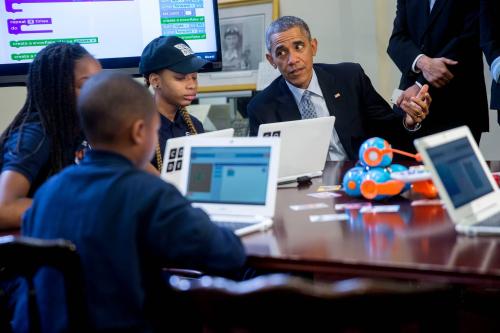The Robert Wood Johnson Foundation recently released its annual report on the status of health IT in the United States. While the health care sector has made huge progress in the adoption and use of electronic health record (EHR) systems, the majority of US providers are still not taking advantage of health information exchange (HIE) platforms. Despite the potential benefits of HIE in increasing the quality and decreasing the cost of health care, this report states that in 2013 “only 34 percent of hospitals shared lab results with external health care facilities and 52 percent did so with only external ambulatory providers.” To address this issue, the newly designed criteria for the third stage of “meaningful use” are heavily focused on HIE. Although the subsequent financial incentives may increase adoption rate, there are also other solutions that can be implemented to effectively increase both the adoption and meaningful use of HIE platforms.
In our forthcoming Information Systems Research (ISR) journal article, my colleagues and I investigate the HIE adoption and usage patterns amongst a population of 2,054 physicians within 430 practices over three years. We model HIE as a multi-sided platform, which connects different health care providers together. We show that the value of HIE for each potential member depends on the number of other doctors who have adopted and regularly use the system. In a nutshell, we consider HIE as the Facebook for doctors.
Facebook with No Friends is a Lonely Place
Would you have joined Facebook if you had no friends who were already using the social network? Probably not! The utility of Facebook for a user depends on the number of virtual friends that he or she has on the network. The experience for a Facebook user with no connections is one that is fundamentally broken. This network effect helps to explain why if a group of teenagers move to Instagram, their friends will soon follow them. If the selfies are on Instagram then the users will follow.
HIE platforms are very similar to Facebook. Their users are doctors who share clinical data instead of selfies. Like Facebook users, doctors care who has joined and what is being shared on the platform. They have distinct groups and place different values on records from different doctors and tests. This depends on how they professionally interact. A dermatologist is more likely to share patients with an allergist rather than a dentist. Therefore an HIE has more value for a dermatologist if many allergists have already joined the platform because he or she will have access to greater volumes of useful clinical information.
Our research indicates three factors that encourage doctors to adopt and use HIE platforms:
- Referred Patients
Our analysis indicates that a medical practice is much more likely to adopt and use an HIE if it receives more referrals from other practices. HIE platforms offer significant value for these practices because it enables medical providers to access useful clinical information from referring doctors. On the other hand, the practices that are the sole health care providers of their patients are less likely to adopt and use an HIE platform because they already have most of the medical information of their own patients and do not have an immediate need to use HIE for obtaining further information. - Timely Record Delivery of Large Distances
Similar to other networks like Facebook, HIE systems have more value if there is a considerable physical distance between the users. According to our research, the geographical location of the practices moderates the relationship between patient referrals and HIE use. Rural practices have difficulty obtaining medical histories through traditional methods. Therefore, HIE platforms have significant value for them. Rural practices that receive a lot of patients from other areas are much more likely than similar urban practices to use an HIE. - Peer Influence
Another finding of our research is that the word-of-mouth and peer influence are significant drivers of HIE adoption and use. Information about medical innovations is usually transmitted through word of mouth rather than classic marketing channels. This implies that doctors have a great peer influence on each other. Practices that employ doctors who use HIE at other medical facilities tend to know more about the benefits and functions of the exchanges. Both the adoption and use of HIE are higher in these practices. Finally, small practices are more likely to use an HIE if they share patients and physicians with a larger practice that also uses the platform. Smaller practices tend to follow the lead of bigger players.
Recommendations:
Medical practices carefully consider the potential benefits and costs of adopting and using an HIE. If providers do not believe that the benefits are large enough to balance out the initial costs then unadjusted financial incentives are unlikely to drive any change. It is critical to consider these lessons to improve the rate of return on investment for the financial incentives of HIE use. Policymakers should tailor incentives for health care providers that have the most to gain. Targeting doctors who could access large troves of useful records, physicians that are geographically isolated, and keystone practices that share providers and patients with others could greatly increase the value of these investments. If the financial incentives are properly aligned with how doctors behave in the real world, then it’s possible to reach a tipping point where health care providers will join in droves. If this occurs, HIE have the potential to dramatically improve the quality of the healthcare system.



Commentary
Health Information Exchange: Facebook for Doctors
August 19, 2014